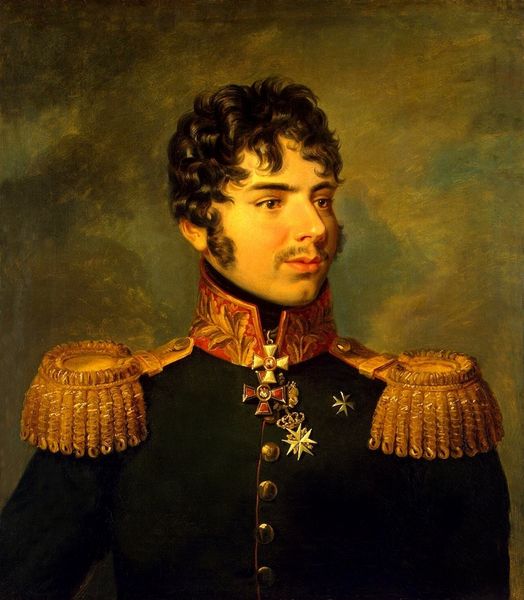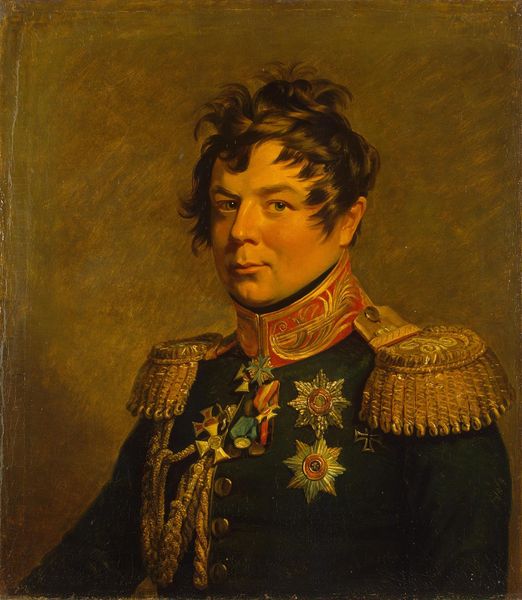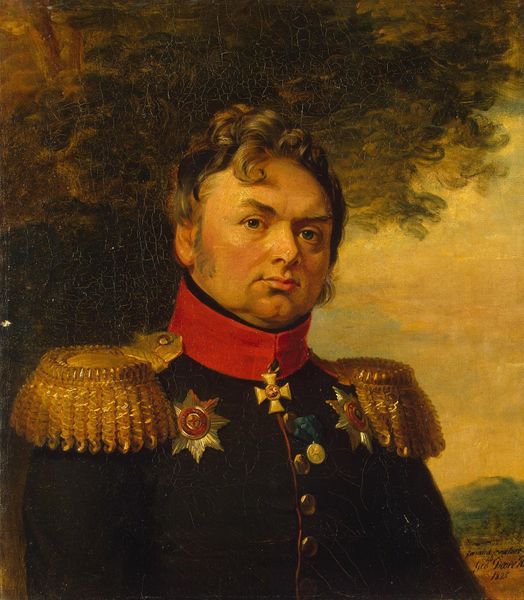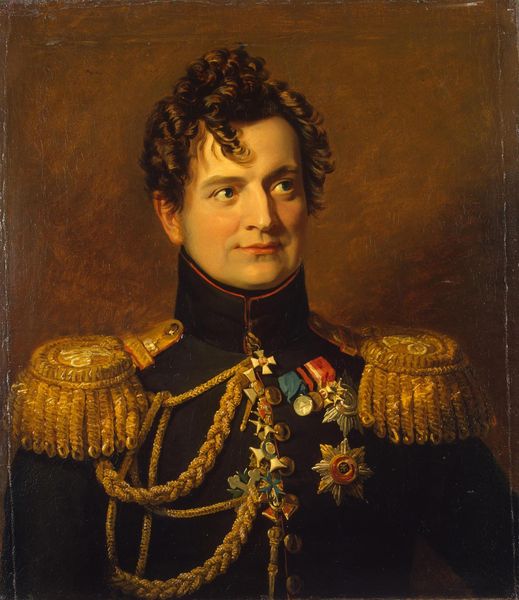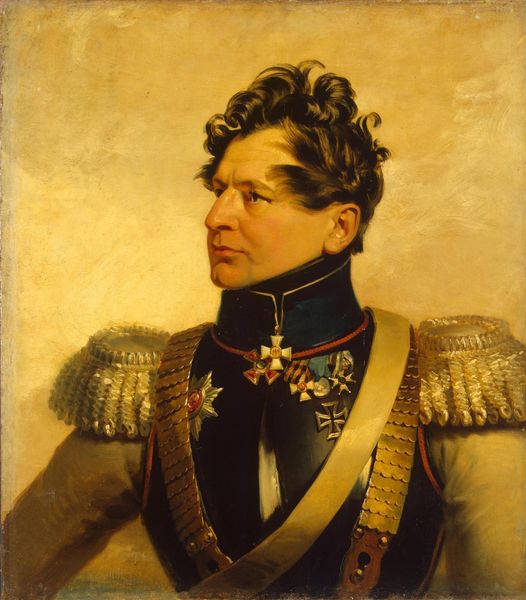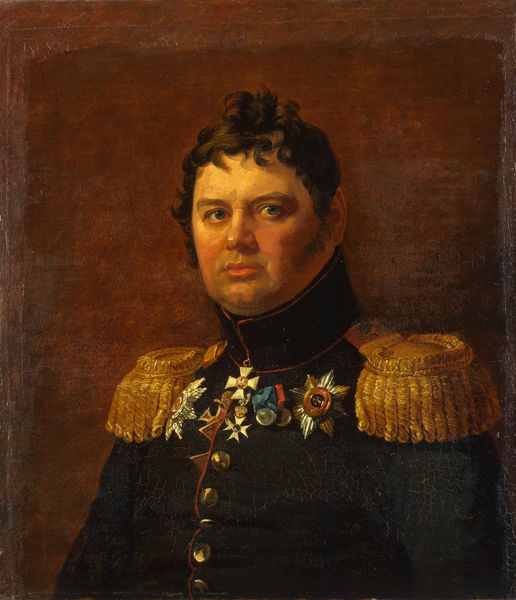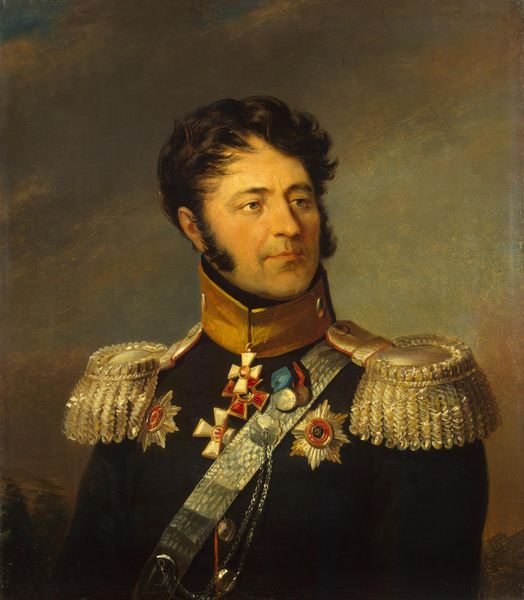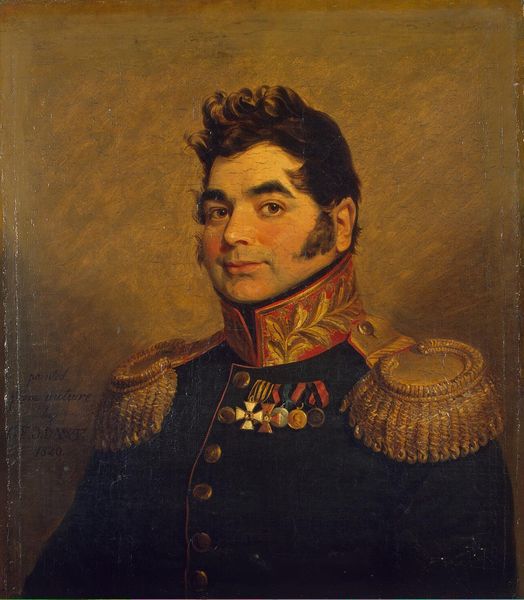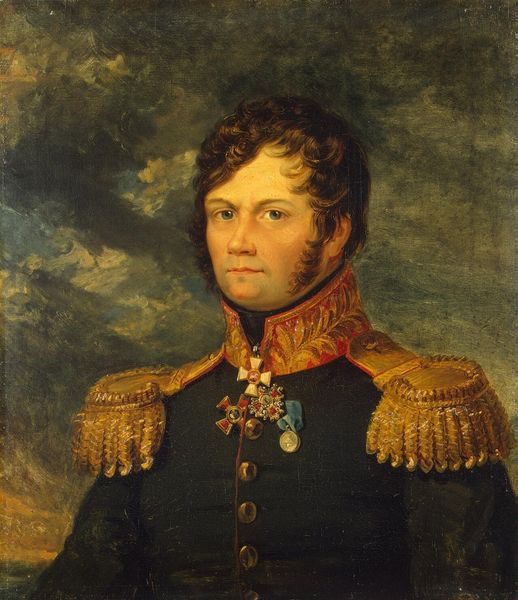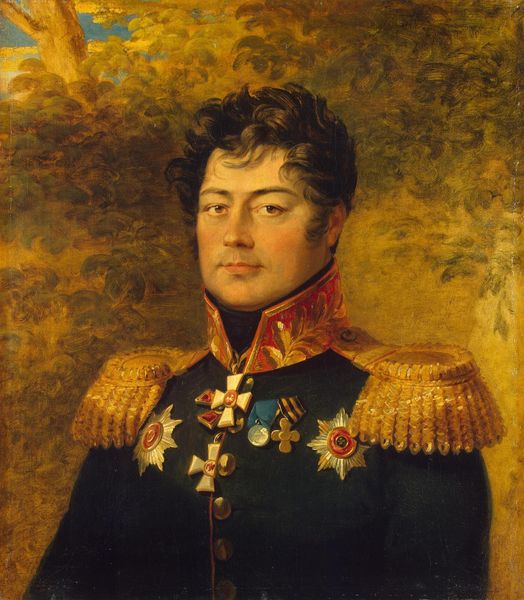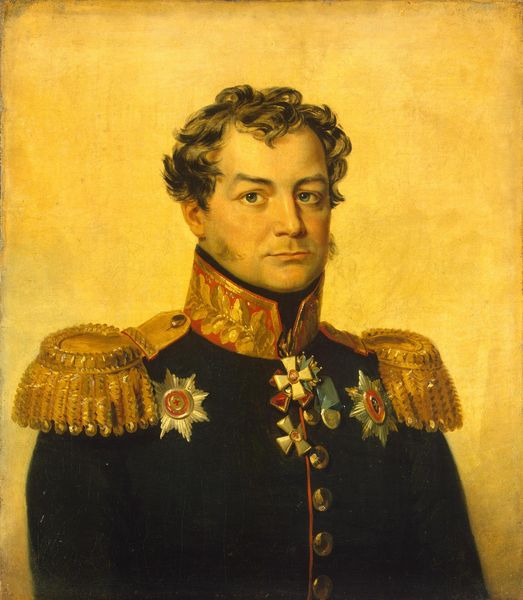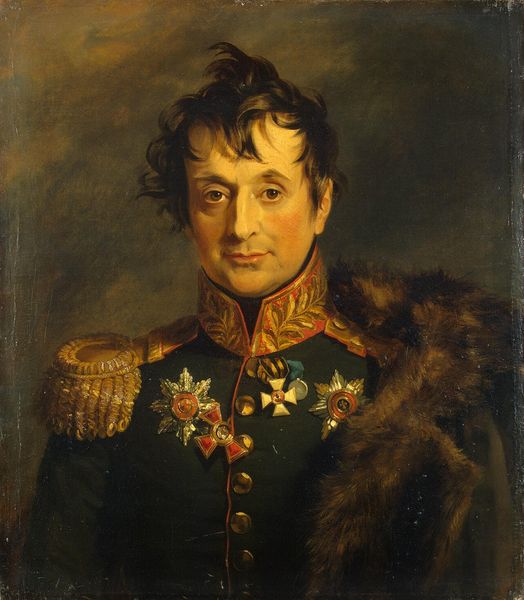
painting, oil-paint
#
portrait
#
portrait
#
painting
#
oil-paint
#
romanticism
#
history-painting
Dimensions: 70 x 62.5 cm
Copyright: Public domain
Curator: Editor: Here we have George Dawe’s 1825 oil painting, "Portrait of Yakov A. Potyomkin." I’m immediately struck by the sumptuousness of the gold detailing against the darker military garb. What do you make of it? Curator: Let's consider this through the lens of material culture. The oil paint itself, its availability and cost in 1825, already signifies a certain level of patronage and access. Look closely at how the artist renders the gold braiding and the medals. What does the meticulous depiction of these materials tell us about the sitter and the intended audience? Editor: I see what you mean. It’s not just about Potyomkin’s likeness but also about communicating status through these carefully rendered materials. It speaks to wealth and power. Did the means of production of these ornate details, say the crafting of his military attire, influence its reception or function as a symbol? Curator: Absolutely. Think about the labor involved in creating those braids, the medals, the uniform itself. The painting becomes a document of consumption and display, but also, implicitly, of the labor that enabled such display. How do you think the average person, someone who would never have access to such finery, might have viewed this portrait? Editor: Perhaps with a mix of admiration and resentment? Knowing that the sitter’s status is built upon their labor... Curator: Precisely. And it also begs the question, doesn’t it? Was this portrait made with an audience outside of the aristocracy in mind? Maybe this image isn't just of Potemkin, but rather reflects on an entire socioeconomic structure, painted with an understanding of, and maybe even a purpose regarding that framework. Editor: That’s a completely different way of viewing portraits; as an artwork connected with social, material and economical power structures, rather than just about the subject himself. It gives the work a fresh, critical relevance. Curator: Agreed. By interrogating the materials and the context of their production and consumption, we reveal a whole new dimension of meaning embedded within the work.
Comments
No comments
Be the first to comment and join the conversation on the ultimate creative platform.
